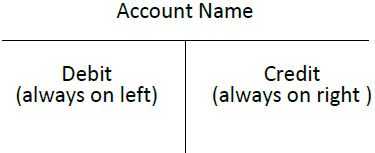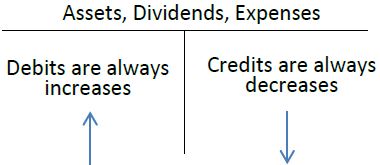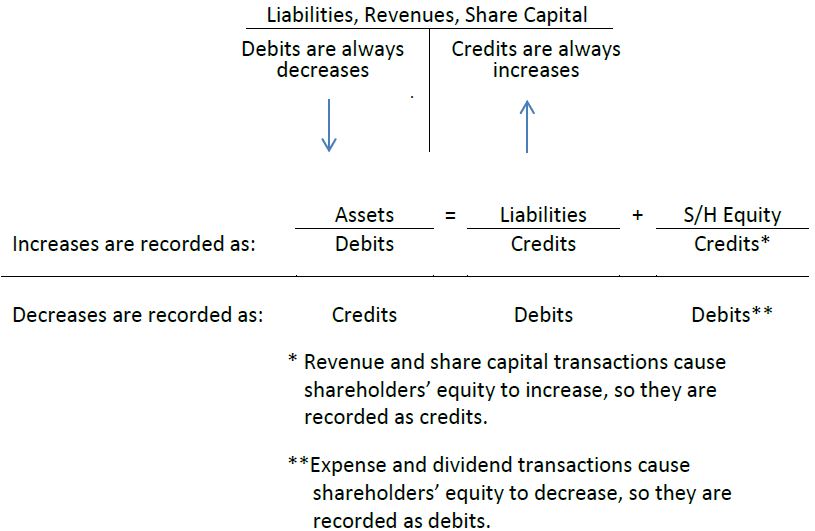A simplified account, called a T-account, is often used as a learning tool to show increases and decreases in an account. It is called a T-account because it resembles the letter T. As shown in the T-account below, the left side records debit entries and the right side records credit entries.

The type of account determines whether an increase or a decrease in a particular transaction is represented by a debit or credit. For financial transactions that affect assets, dividends, and expenses, increases are recorded by debits and decreases by credits. This guideline is shown in the following T-account.

For financial transactions that affect liabilities, share capital, and revenues, increases are recorded by credits and decreases by debits, as follows:

The following summary shows how debits and credits are used to record increases and decreases in various types of accounts.

This summary will be used in a later section to illustrate the recording of debits and credits regarding the transactions of Big Dog Carworks Corp. introduced in Chapter 1.
The account balance is determined by adding and subtracting the increases and decreases in an account as shown below:

The $5,000 debit balance in the Cash account was calculated by adding all the debits and subtracting the credits (10,000 + 3,000 + 400 – 4,000 – 2,000 – 2,400). The $5,000 is recorded on the debit side of the T-account because the debits are greater than the credits. In Accounts Payable, the balance is a $4,300 credit calculated by subtracting the debits from the credits (5,000 – 700).
Notice that Cash shows a debit balance while Accounts Payable shows a credit balance. The Cash account is an asset so its normal balance is a debit. A normal balance is the side on which increases occur. Accounts Payable is a liability and because liabilities increase with credits, the normal balance in Accounts Payable is a credit as shown in the T-account above.
- 5655 reads






